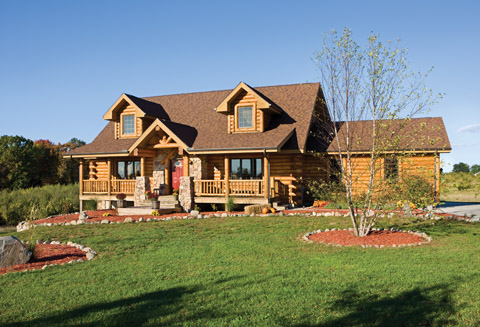Whether they know it or not, today’s home buyers have an array of options when it comes to mortgages. Despite the doom-and-gloom news surrounding the lending industry, Baby Boomers looking to build log homes where they will retire in the future still have choices, says Greg Ebersole, a loan officer with Graystone Mortgage in Mountville, Pennsylvania.
“The media tends to play up the fact that it’s difficult to get a mortgage, but in reality it’s no harder than it was three or four years ago,” says Ebersole, who adds that log home owners tend to be particularly well qualified, with solid credit, good income streams, and available cash for down payments. “The documentation and paperwork may be more cumbersome than they were in the past, but the loan approval process hasn’t changed, and neither has the ability for qualified individuals to obtain mortgages.”
Step by Step
Ebersole says the first step would be to look at your current financial situation to determine which category your new mortgage would fall into. Individuals who already own primary homes, and who are looking to build log homes for future retirement, for example, would be considered second home buyers. “When qualifying these customers, we would take into consideration the new payment on the home being built, and the current mortgage on their primary home,” Ebersole explains. “That’s usually not a problem, but it’s something to consider if you presently own a home.”
In terms of the loan itself, Ebersole says buyers have a few options. There’s the “two-time” closing process, where the customer goes through one approval and a loan closing for a construction loan (to be used to build the home), and another approval on a permanent mortgage (once the home is completed).
Another option is the one-time close construction permanent loan. Using that process, the customer is approved for both the construction loan and the permanent financing upfront, using a single closing. “There’s one formal closing and one set of closing costs,” says Ebersole. “That saves the buyers money, and the hassle of having to go through two different closing and application processes.”
Regardless of which mortgage type is selected, the owner’s income status both now and during retirement will come into play during the lending process. Ebersole says lenders look at the buyer’s financial position once the home is completed, and not at the start of construction. “If someone is already retired at that point, then he or she will have to show proof of pension, Social Security, or other income,” says Ebersole.
If the mortgagee plans to live off of investment income, the situation can be a bit more challenging. The individual who expects to make $25,000 a year on his or her $1 million portfolio, for example, may run into hurdles when applying for a mortgage. “In general, we need a two-year history showing a stable income,” says Ebersole. “Getting that data from the person who is newly retired and relying on investment income can be challenging.”
Careful Planning
When working with customers who want to build retirement log homes, Andrew West, vice president and wealth management adviser at West & Gasparini Group in Rockford, Illinois, says he advises individuals to figure out financially where they are now and where they want (or expect) to be in the future. Prioritizing retirement goals, college expenses, and living/house goals are all important aspects of this planning process, says West.
“We sit down with clients and figure out how to make sure they aren’t house rich and cash poor during retirement,” says West, who is careful to factor in not just monthly housing payments, but also the related real estate taxes, homeowners’ insurance, and ongoing maintenance and utility costs associated with owning two homes. “Even if you only have dual ownership for a few years, it can get pretty expensive.”
Photography by Roger Wade Studio

